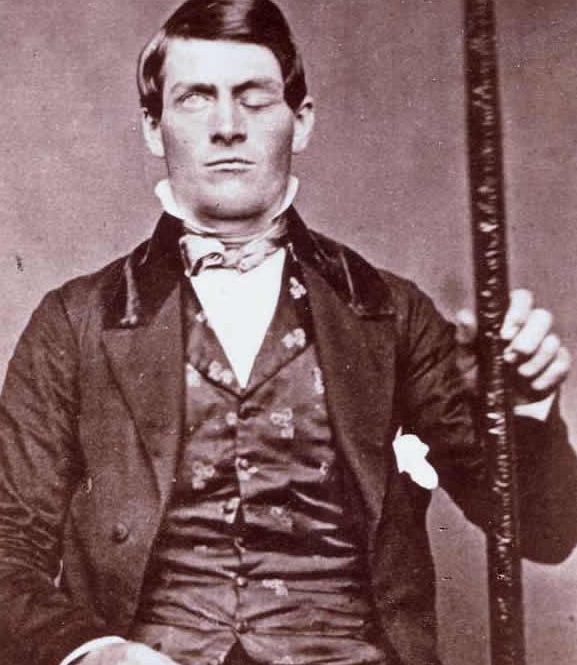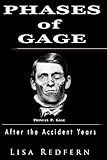The story of Phineas Gage of Vermont is one that has captivated medical historians for centuries. The remarkable tale of the 25-year-old railroad foreman who, in 1848, suffered a severe brain injury when an iron rod was driven through his head only to survive and live on another 11 years has been studied extensively by neurologists. His case not only demonstrated the incredible resilience of the human body but also provided important insights into how damage to certain areas of the brain can affect personality traits.
Phineas Gage and His Remarkable Story
Today, we know more than ever about how traumatic brain injuries impact individuals’ lives; however, it was largely due to Phineas Gage's case that this knowledge became available. Despite being written off as a hopeless cause immediately after his accident, he slowly but surely regained consciousness and began what would be a long road towards recovery. As such, he serves as an inspiration for those living with similar conditions today.
His story highlights both our capacity for survival against all odds and our ability to adapt even in light of tremendous adversity. In this article, we will delve further into Phineas Gage’s life before and after his fateful accident and discuss its implications for contemporary neuroscience research.
Background Information
Phineas Gage of Vermont is known for his unique medical case from the 19th century. He was a railroad worker who suffered a traumatic brain injury that has been studied by neuropsychologists and neurologists ever since. His accident has become one of the most famous cases in neuroscience history, and it helped to advance our understanding of how different parts of the brain control behavior.
The details surrounding Phineas Gage’s life are sparse; what we do know comes largely from newspaper accounts at the time and even those were often exaggerated or inaccurate. What is certain is that he worked as a foreman on construction crews working on the Rutland & Burlington Railroad in Cavendish, Vermont. On September 13th, 1848, while preparing an explosive charge to break up rock near his work site, something went terribly wrong: A rod used to tamp down explosives flew out with tremendous force, piercing through his left cheekbone and exiting through the top of his skull. Miraculously, Gage survived this horrific event which would have killed any other man instantly. It is believed that no other human being had previously experienced such extensive damage to their head without succumbing shortly thereafter.
This remarkable incident marked the beginning of a new chapter in Phineas Gage's life – one where he faced significant changes both physically and mentally due to his traumatic brain injury (TBI). To further understand these changes, let us look more closely at ‘his accident'.
- Phineas Gage By Fleischman John
- Fleischman, John (Author)
- English (Publication Language)
- 96 Pages – 11/01/2004 (Publication Date) – Clarion Books (Publisher)
- Trout PhD, Paul A (Author)
- English (Publication Language)
- 517 Pages – 02/17/2020 (Publication Date) – Trout Pond Publishing (Publisher)
- John Parker (Author)
- English (Publication Language)
- 07/27/2024 (Publication Date) – Educators Pub Svc Inc (Publisher)
- Hardcover Book
- J. Fleischman (Author)
- English (Publication Language)
- 01/01/2002 (Publication Date) – Houghton Mifflin Books for Children (Publisher)
- Hardcover Book
- Malcolm Macmillan (Author)
- English (Publication Language)
- 562 Pages – 07/27/2024 (Publication Date) – Bradford Books (Publisher)
- Redfern, Lisa (Author)
- English (Publication Language)
- 124 Pages – 05/18/2017 (Publication Date) – Little Mountain Publishing (Publisher)
His Accident
On September 13th, 1848, a horrific accident occurred in Cavendish, Vermont. Phineas Gage was working on the railroad when he accidentally set off an explosion that sent the tamping iron through his head and out of the top of his skull. The 3-foot long rod had been used for packing explosives into a rock blasting hole; however it became an instrument of destruction for one unlucky man. It pierced Gage's left frontal lobe, causing extensive skull fractures as it exited from his forehead.
Gage survived this life-threatening event due to a combination of luck and immediate medical attention. He was reported to be conscious shortly after the incident and able to speak coherently with bystanders who witnessed what happened – all signs indicating that there were no major brain injuries associated with the trauma. Furthermore, doctors at Dartmouth Medical School determined that the injury did not directly affect any vital organ or essential physiological functions like respiration and circulation.
This miraculous survival story has become immortalized in medical history as one of humanity’s most remarkable feats of perseverance against physical adversity. Afterward, Gage continued living a relatively normal life until his death twelve years later on May 21st 1860 in San Francisco California – but not before gaining notoriety around the world as ‘the man whose head was split open by a metal rod’. As we shall soon see, although Gage suffered no apparent physical damage from his accident, its psychological consequences would have far reaching implications for neuroscience research today.
Medical Consequences
The medical consequences of Phineas Gage's traumatic brain injury are still studied today. The cranial damage caused by the rod entering through his cheek and passing out through the top of his skull was severe, with fragments of bone being ejected in the process. This resulted in extensive damage to the frontal lobe area of the brain, causing a variety of neuropsychological effects that have been documented throughout case studies for over 150 years.
Gage's physical abilities were impaired following the accident; he suffered from epileptic seizures, aphasia (the loss or impairment of speech) and general weakness on one side of his body due to hemiplegia. He also experienced drastic changes in personality which included increased irritability, impulsive behavior and difficulty controlling emotions. These psychological symptoms had long-term implications for Gage's life as it changed how people interacted with him and affected his ability to work at certain occupations.
More modern research has highlighted further neurological issues associated with Gage’s injury such as cognitive deficits including language impairments, executive dysfunction, emotional regulation issues and attentional problems. Despite these lasting effects however, there is evidence that some aspects of memory remained unaffected suggesting not all areas of cognition can be attributed solely to this region of the brain. With regards to its impact on human history, Phineas Gage’s story serves as an important reminder about the potential consequences when suffering from serious head injuries. Moving forward we turn our attention towards understanding how exactly these changes impacted Gage's personality in more detail…
Personality Changes
What impact did Phineas Gage's injury have on his personality? While the medical consequences of the accident were significant, it is perhaps the changes in Gage's personality that are more widely known. His recovery was remarkable, but it became clear that he had experienced a profound transformation in his behavior and disposition.
Gage had been an industrious worker before the accident; after, he seemed to lose any interest in work or ambition beyond simply getting by. He was unable to hold down any job for long due to his increasingly erratic behavior – something which set him apart from those who knew him prior to the incident. Additionally, while previously affable and reliable, Gage began displaying signs of aggression, impulsivity and irritability following his injury. It soon became apparent that this was caused by frontal lobe damage resulting from the tamping iron passing through his skull.
These drastic behavioral changes suggest there may be a link between brain trauma and alterations in temperament and personality. Despite being an isolated case study at the time, Gage’s story continued to garner attention as researchers looked into how physical injuries can affect mental functioning on different levels – ultimately leading to advances in neuroscience. The physiological effects of brain trauma remain relevant today as we continue to explore its implications for our understanding of human cognition and emotion.
Impact On Neuroscience
The case of Phineas Gage has had a lasting impact on our understanding of the human brain. His traumatic injury caused severe damage to his frontal lobe, resulting in drastic changes to both his cognitive abilities and personality. This tragedy revealed that specific areas of the brain are associated with certain functions and behaviors. In particular, it provided evidence for an increase interest in neurological research into the roles these regions play in behavior, memory, decision-making, emotion regulation and other cognitive processes.
Furthermore, this incident sparked a new wave of medical treatments aimed at restoring or improving damaged neural tissue. It also helped us better understand how different individuals respond differently to similar injuries due to variations in their brains’ function and structure. As a result, researchers have been able to develop more effective interventions for people suffering from various brain disorders such as stroke and dementia.
Phineas Gage's story continues to challenge scientists today by providing insight into how the mind works even after experiencing extreme trauma. By studying his case over time, we can gain greater knowledge about the effects of brain damage and its potential recovery options – ushering us towards improved treatments for those living with significant impairments. Moving forward then, we will explore Phineas Gage's enduring legacy within neuroscience and beyond.
Phineas Gage's Legacy
The legacy of Phineas Gage is one that has been remembered and studied in the world of neuroscience for centuries. His case was a landmark in 19th century medical history, as it provided insight into the effects of brain injury on cognitive functions. The damage caused by Gage’s accident allowed researchers to gain an understanding of how different areas of the brain control particular functions. This knowledge laid the groundwork for many current studies investigating traumatic brain injuries and their effects.
Gage's story continues to be taught today in classrooms across the country, inspiring future generations of neurologists. His remarkable resilience following his life-altering accident demonstrates what human beings are capable of enduring under extreme circumstances. In addition, Gage's experience prompted numerous advances in neuroscience research, from neurological imaging techniques to modern theories about how our brains work.
Phineas Gage will forever remain an important figure in medical history due to his incredible story and its lasting implications for science and medicine. He provides us with valuable insights into the delicate relationship between mind and body which can still be seen throughout contemporary scientific investigations into cognitive function and trauma recovery. As we continue to learn more about neuroscience through further research, it is clear that Gage's legacy lives on as a powerful reminder of what can happen when our minds are irrevocably changed by tragedy or misfortune.
Scientific Significance
Phineas Gage's case has been widely seen as a landmark in the history of neuroscience and medicine. The story of his injury, recovery, and eventual death from epilepsy due to frontal cortex damage is a testament to the power of science to uncover important information about neurological processes. His experience also demonstrates the medical implications associated with severe neurological trauma—an issue that is still relevant today.
Gage’s case was one of the first medically documented accounts of an individual suffering neurological damage due to a traumatic accident. This helped scientists understand more clearly how brain injuries can affect behavior, personality, and cognition. It provided insight into how certain types of brain injuries could lead to physical or mental impairments as well as changes in mood regulation, motor control, decision making abilities and memory formation.
The scientific significance of Gage’s story lies in its contribution to our understanding of modern day neuropsychology and its implications for clinical care related to brain injury victims. By studying Phineas Gage’s case we are able to gain valuable insights into what kind of effects may follow similar traumas suffered by other individuals, allowing us to better treat them on all levels – cognitively, emotionally and physically. With this knowledge at hand, clinicians have both a deeper comprehension of the long-term consequences associated with these kinds of accidents as well as greater ability to develop effective interventions for those affected by such traumas. As we move forward in time it will be interesting to compare other cases like Gages' against new research findings regarding treatments and therapies meant to ameliorate symptoms stemming from such incidents.
Comparisons To Other Cases
What makes Phineas Gage's case so unique? His story has been a source of fascination for medical historians since it first occurred in 1848. Throughout history, there have been numerous cases of people suffering from traumatic brain injuries and the resulting cognitive impairments that come with them. Yet none are as well-documented or celebrated as that of Phineas Gage. Comparing his case to others only further emphasizes its significance.
To begin, many similarities can be drawn between Gage's injury and other documented head trauma cases, such as those of Charles Jallon in 1825 and Leborgne in 1861. All three men experienced similar severe damage to their heads after being struck by metal objects; all displayed changes in personality, behavior, and overall mental capacity; and all had evidence of physical damage on their brains postmortem. It is clear then that the effects of head trauma were not isolated incidents but rather shared experiences amongst these individuals who suffered similarly catastrophic events.
The most significant comparison to make though is between Phineas Gage and Harlow’s monkey experiment conducted shortly afterward in 1849. In this study, two identical monkeys were subjected to traumatic brain damages before having their behaviors monitored over time – one with a fully intact skull and one without any protecting covering around its brain whatsoever. The results showed drastic differences between the two animals: the exposed monkey exhibited much more extreme disturbances than the other while partaking in everyday activities like eating and drinking water. This research was integral at demonstrating how important a role our skulls play in protecting our brains from external forces – something which Gage proved through his own experience when his massive wound healed rapidly despite lacking any kind of protection or treatment beforehand.
It is evident that although we may never know precisely what happened inside Phineas Gage's mind during his recovery process, studying both him and other historical accounts remains an essential way to better understand how the human brain works even today.
Modern Interpretations
Today, the story of Phineas Gage stands as an example of how brain damage can cause both physical and emotional changes. Modern interpretations of his case provide insight into the potential social impact of severe neurological injuries.
Phineas Gage has become a central figure in cognitive science, with studies suggesting that his remarkable personality change may have been caused by more than just localized effects on specific parts of the brain. His case is often used to illustrate how even small amounts of neural damage can have profound impacts on behavior. In addition, modern research suggests that not all areas of the brain are equally important for maintaining personality traits, thus providing further evidence for the notion that there is no one-to-one mapping between particular regions and certain behaviors or skills.
In recent years, researchers have also looked at other aspects of Gage's life such as his employment history and family relationships before and after his accident. By comparing these data points to existing cases, they have uncovered some evidence that supports theories around resilience following traumatic brain injury and its implications for long-term outcomes.
The legacy left by Phineas Gage continues to inform our understanding today about what happens when someone suffers serious head trauma. As we continue to learn from this tragic incident, valuable lessons are being drawn regarding the importance of early intervention and support systems for those affected by similar events.
Lessons Learned
What lessons can be learned from the story of Phineas Gage? The 19th-century railroad worker who suffered a traumatic brain injury in 1848 and lived to tell the tale has left us with much to consider. As a medical historian, there are several key takeaways that should not go unnoticed.
To begin, it is important to note how profoundly one’s cognition and personality can be affected by brain damage. In Gage’s case, an iron rod was driven through his skull causing severe physical trauma which resulted in significant cognitive impairment and noticeable changes in his behavior. These effects were lasting and irreversible – highlighting just how delicate our brains truly are.
The second lesson involves recognizing how even those suffering from such conditions can still lead a productive life despite their impairments. Despite the extensive brain damage he endured, Gage continued to work as a laborer for many years after the accident before eventually passing away at age 38 – demonstrating that individuals living with disabilities have great potential for success if given proper support and care.
It is clear that this remarkable yet tragic story continues to leave its mark on science today thanks largely due to these two valuable lessons. It serves as reminder to medical professionals everywhere about the power of neuroplasticity, but also about the capacity for human resilience in spite of disability or unfortunate circumstance.
Frequently Asked Questions
What Is The Exact Cause Of Phineas Gage's Accident?
In 1848, Phineas Gage of Vermont suffered an accidental injury that would shape medical history. While tamping explosives on a railroad in Cavendish, he was hit by an iron rod which passed through his head and caused extensive brain damage.
The exact cause of this tragic accident has been debated for centuries. It is known that the force from the explosion drove the iron rod through Gage's skull with enough power to permanently alter him both physically and mentally. However, it remains unclear whether the blow itself or some combination of factors led to what happened next.
This incident provided researchers with invaluable insight into how human brains function and how injuries can affect behavior. It demonstrated the significance of certain structures in different areas of cognition like speech, memory, decision-making, problem solving and motor control:
- Cognition:
- Speech
- Memory
- Decision making
- Problem solving
- Motor control
It also highlighted just how fragile our minds are when exposed to unexpected trauma and showed us that we must be vigilant about protecting ourselves against potential dangers—even those we cannot see coming. The legacy of Phineas Gage continues to inform modern medical science as well as our understanding of resilience in the face of adversity.
What Were The Long-Term Physical Effects Of The Injury?
It is estimated that over 1,000 people in the United States suffer a traumatic brain injury (TBI) every day. One of the most famous cases of TBI is the story of Phineas Gage, whose accident and long-term physical effects have been studied for centuries. His case provides insight into the profound impacts of brain injuries on both cognitive changes and psychological health.
Phineas Gage suffered an explosion-related accident which caused him to lose control of his right hand side motor functions as well as other physical symptoms including seizures and headaches. Additionally, there were dramatic cognitive changes resulting from his brain injury such as difficulty concentrating, impaired memory recall, depression, mood swings and impulsive behaviors. These cognitive changes had significant social implications; he was unable to perform many daily activities or work related tasks due to these impairments.
Despite medical treatments at the time being largely ineffective in treating TBIs, it was ultimately determined that the primary cause of Phineas Gage's issues stemmed from his traumatic head trauma rather than any pre-existing conditions. While this was an incredibly difficult period in his life with tremendous personal suffering, we can thank Phineas Gage for providing us with invaluable insights about long-term physical effects after a major brain injury. As a result of studying this important case, doctors now have more effective ways to treat patients who have sustained similar injuries today.
How Did Phineas Gage's Accident Influence The Development Of Neuroscience?
The accident involving Phineas Gage in the 19th century had an undeniable influence on the development of neuroscience. This event, which occurred in Vermont, is renowned for being one of the first documented cases to demonstrate how severe brain injuries can lead to drastic changes in personality and cognition. As this case was extensively studied for decades after it happened, it has provided a wealth of insight into how certain lesions affect behavior and mental functioning.
At the time of his injury, only rudimentary knowledge about brain anatomy existed. The damage that Gage suffered caused him to lose control over many basic functions such as speech, movement and memory. In addition, his emotional state changed drastically from pre-accident; he became more impulsive and difficult to manage according to reports at the time. His story has been used ever since by neuroscientists as a benchmark for studying similar cases around the world.
By examining what happened to Gage following his accident, scientists have gleaned valuable information regarding how physical trauma affects behavioral outcomes and neurological processes. Indeed, much of our current understanding concerning traumatic brain injury owes its origin to Gage's case due to its pioneering nature when it comes to documenting long-term effects associated with head trauma. It is clear that without this incident occurring in rural Vermont during the mid-19th century, modern neuroscience would not be where it is today.
How Was The Case Of Phineas Gage Similar To Other Cases Of Brain Injury?
Have you ever wondered how a single accident can change the course of history? The case of Phineas Gage is no exception. His remarkable story has been studied extensively, providing valuable insight into brain injury cases and helping medical historians understand similar cases.
The effects of Gage's accident in 1848 are well documented, as he experienced severe damage to his prefrontal cortex after an iron rod passed through his skull following an explosion. This incident was one of many that helped researchers uncover the long-term impacts that injuries like this could inflict on individuals with similar brain anatomy.
Medical historians have used Gage's case to research various aspects of neurological trauma, such as the relationship between injury severity and cognitive impairment and changes in personality due to physical damage within the brain. Through studying these types of accidents and their associated outcomes, we can gain deeper insights into other extreme forms of injury sustained from accidents or violence.
Gage's story continues to be important today, informing our understanding not only about neuroscience but also about individual resilience and recovery from traumatic events. His legacy will continue to live on for generations to come as more information about his experience is uncovered and shared with others who may benefit from it.
What Modern Applications Can Be Learned From The Story Of Phineas Gage?
The case of Phineas Gage has been widely studied and discussed within the medical community. Looking at it from a modern perspective, what can be learned from this remarkable individual's experience? Since his time, tremendous advances have been made in understanding brain injury and its consequences. As such, knowledge gained from studying the story of Phineas Gage has helped to inform contemporary approaches to traumatic brain injuries (TBIs).
Brain injury research is continuing to progress rapidly, allowing us to gain new insights into how best to treat TBIs. Thanks to advancements in neuroscience technology over the past two centuries, we are now able to understand more about how different regions of the brain interact with one another and respond under various conditions. This information has enabled far more effective treatment strategies for those who suffer from head trauma or other forms of brain damage.
Moreover, many aspects of recovery from TBIs are much better understood than they were during Gage’s lifetime. We now know that rehabilitation and therapy play an essential role in helping patients regain lost skills and abilities following a severe brain injury – something which was not possible for Gage himself due to lack of resources at the time. By learning about his experiences then, doctors today are able to provide improved diagnosis and care for individuals suffering similar traumas.
In summary, there is no doubt that researchers continue to benefit enormously by examining cases like Phineas Gage’s in light of our current scientific knowledge base regarding TBIs. While some details may never be known due to lack of records, what we do know helps guide modern-day physicians as they develop better treatments and therapies for those affected by serious head injuries today.
Conclusion
The story of Phineas Gage is one that has captivated medical historians for centuries. His case was revolutionary in the field of neuroscience, as it provided insight into the effects of brain injury and highlighted the importance of understanding how trauma can alter behavior. It's estimated that approximately 1.7 million people suffer from traumatic brain injuries each year – a statistic which reminds us just how relevant this case still is today.
Phineas Gage's accident changed medicine forever by demonstrating that even seemingly small alterations to our brains can have drastic consequences on our behavior. This knowledge has been used to develop treatments for various conditions ranging from dementia to addiction and beyond. Moreover, his personal story serves as an important reminder of what we stand to learn from exploring how our brains work, no matter how challenging or uncomfortable those conversations may be.
In sum, the legacy of Phineas Gage will continue to influence our understanding of neuroscience for years to come. We must remember his story not only as a tragedy but also as an inspiration: despite undergoing unimaginable pain and suffering, he remained resilient until his death in 1860 at age 38 – showing us that with determination and courage, anything is possible when it comes to healing and recovery after a brain injury.
Thank you for reading this post, don't forget to subscribe to our email list for the latest news!











